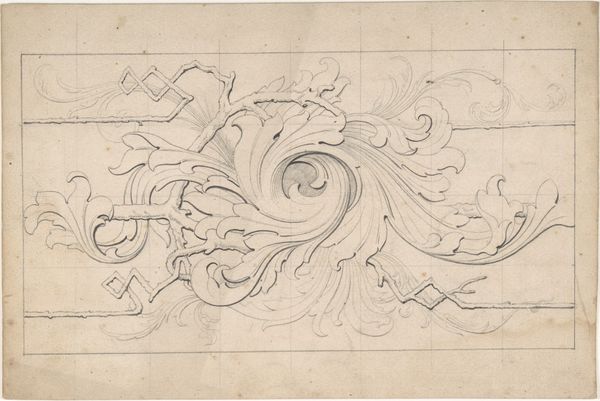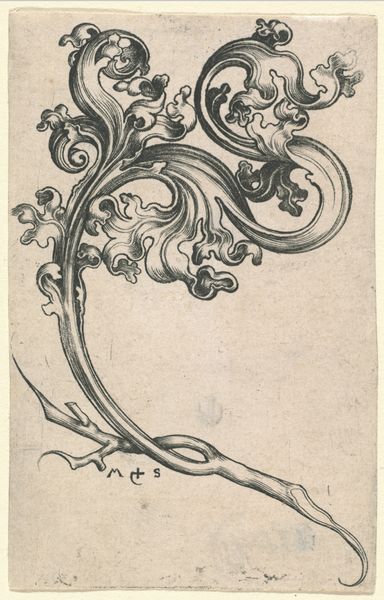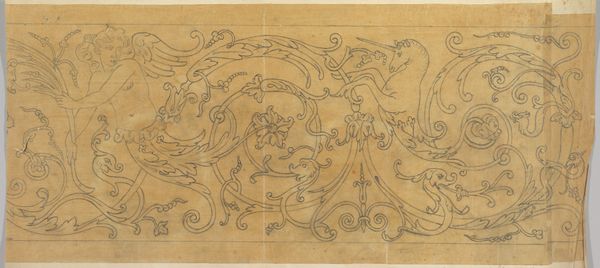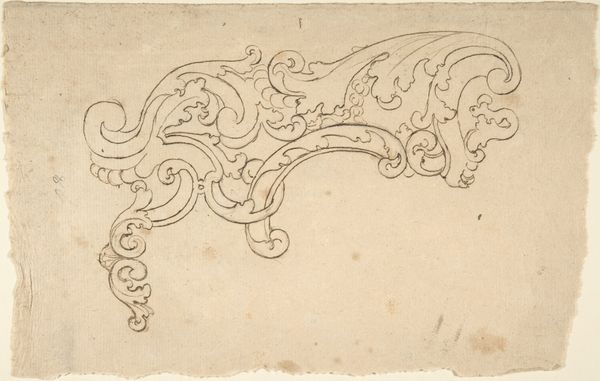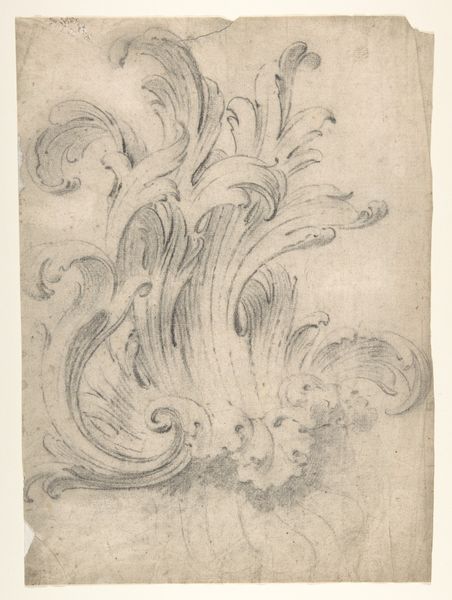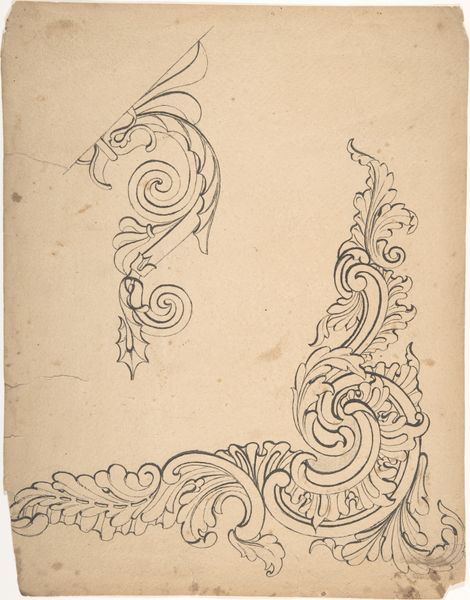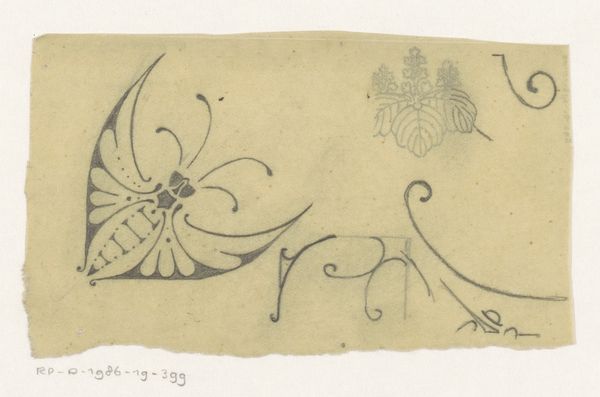
Designs for borders and corners, acanthus 1830 - 1904
0:00
0:00
Copyright: Public Domain
Editor: Here we have "Designs for borders and corners, acanthus," created between 1830 and 1904 by Robert William Hume. It's a drawing rendered in ink. I find the geometric layout interesting, especially contrasted with the organic forms of the leaves and flowers. What strikes you about it? Curator: Looking at this piece, I’m immediately drawn to the production of design itself. This isn’t just art for art's sake; it's a functional drawing intended to guide the creation of something else – perhaps furniture, architecture, or even textiles. Editor: So, you see this less as a standalone work and more as a step in a larger manufacturing process? Curator: Precisely. Think about the Arts and Crafts movement, where this piece finds its roots. It was all about democratizing art, blurring the lines between 'high art' and craft. Designs like these were crucial. Consider, too, the paper and ink: humble materials put to use in what could become mass-produced, accessible decoration. What kind of labor was involved in creating similar artworks or products that followed this design? Editor: That’s fascinating. I hadn't thought about it in terms of mass production. It also hints at the consumption habits of the time – who were these borders and corners for? Curator: Exactly! We can also ask, what alternatives might other designers in other locations or social positions employ in their work and artistic production? How does labor change depending on where the work is made? By exploring the material reality and intended purpose, we move beyond just admiring its aesthetic. Editor: I'm now looking at this design with new eyes, seeing it not just as a pretty drawing but as a document that speaks volumes about design, labor, and social context. Thanks! Curator: And understanding its function highlights the intention and the means of its creation – vital components of materialist analysis. It also reminds us that "art" often serves multiple purposes, from aesthetic enjoyment to practical application.
Comments
No comments
Be the first to comment and join the conversation on the ultimate creative platform.

